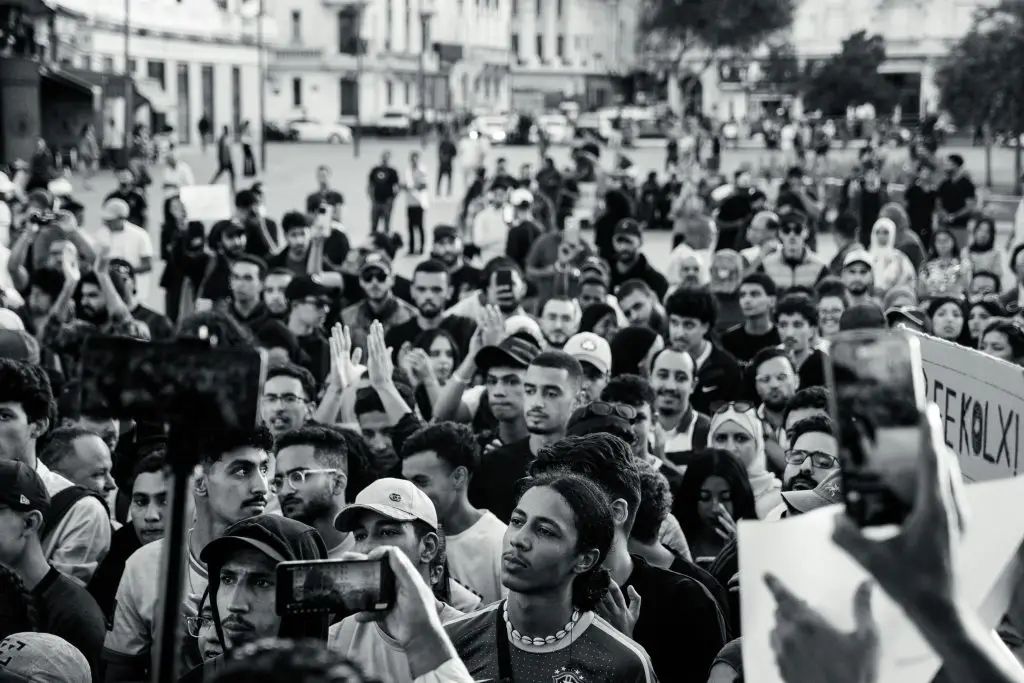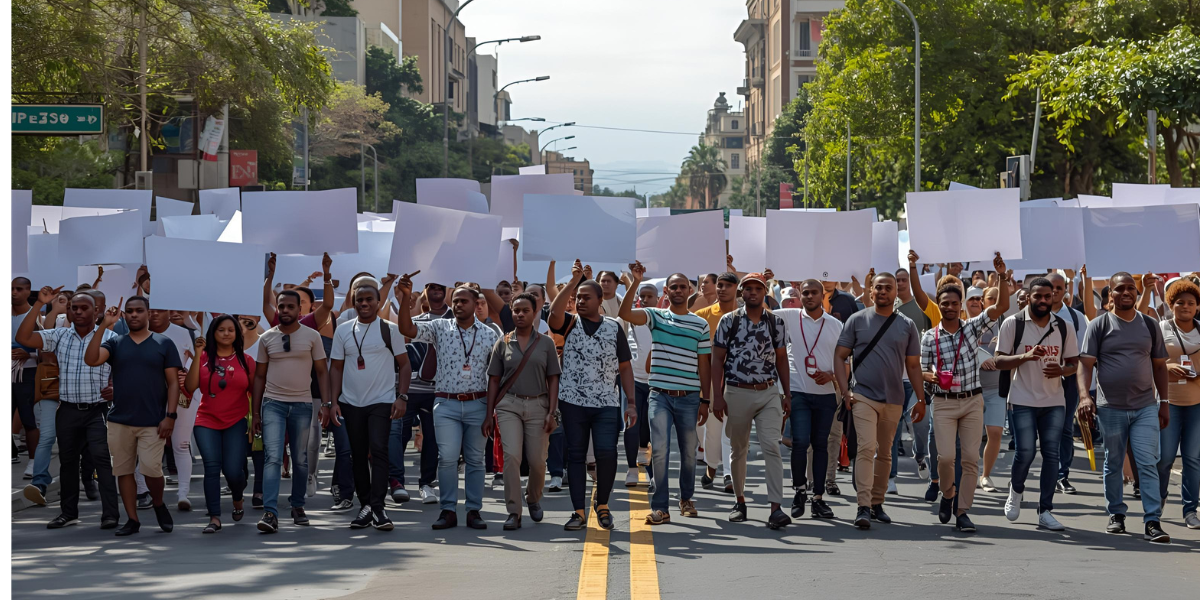
Introduction
In recent weeks, Morocco youth protests have captured international attention, revealing the growing frustration among young Moroccans over inequality, unemployment, and limited access to opportunities. What began as small demonstrations in Rabat quickly spread to other cities, signaling a deeper need for social and economic reform. The movement is not just about unrest—it’s a call for inclusion, dignity, and a fair share in Morocco’s development story.
The Spark Behind the Protests
The Morocco youth protests were triggered by rising living costs, economic stagnation, and a lack of sustainable jobs. With youth unemployment hovering above 30%, many young Moroccans feel trapped in a cycle of limited opportunity. Despite strong macroeconomic indicators and growth in tourism and infrastructure, wealth distribution remains uneven. For a generation raised with global connectivity and higher expectations, the gap between promise and reality has never been wider.
In cities like Casablanca, Tangier, and Marrakesh, young protesters voiced demands for “jobs, dignity, and justice.” The message was clear: economic growth without inclusivity cannot sustain social peace. The Moroccan government’s challenge now lies in translating progress on paper into tangible improvements in everyday life.
Economic Growth vs. Everyday Reality
Morocco has long been hailed as one of North Africa’s more stable economies. Its focus on renewable energy, tourism, and industrial diversification has attracted global investors. However, beneath these achievements lies a stark contrast—many citizens, particularly youth and those in rural areas, still struggle to find basic opportunities.
Experts note that while Morocco’s GDP has grown, the benefits have not trickled down evenly. The protests highlight how economic policies, no matter how sound, must be matched with strong social frameworks that empower the population. The Morocco youth protests have therefore become a mirror reflecting the country’s urgent need to balance economic ambition with social justice.
Government Response and the Call for Dialogue
In response to the unrest, Moroccan authorities emphasized calm and dialogue. Officials urged protesters to engage peacefully and reassured citizens that the government is committed to reform. Prime Minister Aziz Akhannouch’s administration has reiterated plans to boost job creation, improve education, and strengthen social safety nets.
The Ministry of Interior stated that dialogue remains “the only viable path forward,” underscoring Morocco’s intent to avoid confrontation. The government’s cautious yet proactive tone has been viewed positively by analysts who believe sustained engagement with young citizens could strengthen trust and stability.
Youth Aspirations and the Changing Social Contract
Morocco’s younger generation represents over one-third of its population—an energetic and digitally connected force eager for change. Many are educated, globally aware, and passionate about civic engagement. Yet their aspirations often collide with limited job opportunities and slow bureaucratic processes.
The Morocco youth protests are a manifestation of this generational tension. Young people no longer wish to wait passively for change—they want to help shape it. Their voices signal a new era of civic consciousness that could push the country toward deeper reforms in governance, transparency, and inclusiveness.
The Path Forward: Turning Protest into Progress
The recent unrest can be a turning point for Morocco if handled with empathy and foresight. Experts recommend several strategic measures to convert protest energy into positive change:
- Expand Youth Employment Programs: Focus on entrepreneurship, digital economy, and vocational training.
- Reform Education: Align curriculums with market needs and innovation-driven industries.
- Boost Rural Development: Bridge the urban-rural gap by improving infrastructure and access to resources.
- Encourage Dialogue Platforms: Create local forums where youth can engage directly with policymakers.
- Ensure Transparency: Promote accountability in governance and public spending.
By focusing on these priorities, Morocco can transform discontent into collaboration and progress.
Global Reactions and Regional Implications
The world is watching how Morocco handles this moment. International observers have commended the government’s measured approach and its emphasis on dialogue. Analysts also note that Morocco’s experience could serve as a model for other North African nations facing similar youth-driven pressures.
The Morocco youth protests underscore a broader regional pattern where economic stability alone is no longer enough—citizens want participation, fairness, and purpose. As Morocco navigates these demands, it has an opportunity to set a new example of inclusive growth for Africa and beyond.
Conclusion
The Morocco youth protests have done more than disrupt daily life—they’ve sparked a vital conversation about inclusion, opportunity, and shared prosperity. Morocco stands at a crossroads: respond with empathy and reform, or risk deepening divisions. By embracing dialogue, investing in youth, and ensuring equitable growth, Morocco can emerge stronger and more united.
The protests are a reminder that the strength of any nation lies not in its GDP numbers but in the hopes and opportunities it offers its young people. This is Morocco’s moment to listen, evolve, and lead by example.
FAQs
1. What caused the Morocco youth protests?
They were sparked by rising living costs, unemployment, and frustration over inequality and lack of opportunity.
2. How many people were affected during the protests?
At least three people were reported dead and over 400 arrested, according to news sources.
3. What is the government doing to address the protests?
The government has called for peaceful dialogue and promised reforms in jobs, education, and social services.
4. Why is youth unemployment so high in Morocco?
Limited private sector jobs, slow economic diversification, and mismatched education contribute to the problem.
5. What’s the long-term outlook for Morocco’s youth movement?
If reforms continue and youth engagement grows, it could lead to stronger democracy and more inclusive development.
Meta Description:
“Explore Morocco youth protests 2025, highlighting demands for jobs, education, and inclusion. Learn how the government is responding and shaping a brighter future for young Moroccans.”



